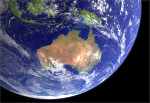|
|

|
| 2011 - Luna Park - Scenic Railway |

|
| 1915 - entrance to Luna Park |
LUNA PARK - JUST FOR FUN!
Melbourne's Luna Park
was started in 1912 and has seen many changes and facelifts since! My first visit was in 1946.
The activities
I liked best were the Scenic Railway, the Big Dipper (now demolished), the River Caves, the House of Mirrors, and the Dodgem
Cars!
|
|
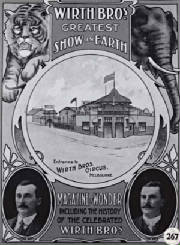
|
| 1926 - Wirth's Circus promo |
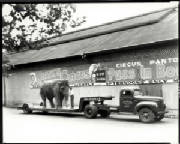
|
| 1945 - Wirth's Circus - elephant! |
THE GREATEST SHOW ON EARTH - WIRTH'S CIRCUS
Wirth's
CIrcus was located in St Kilda Rd, just across from the Yarra, and began in 1907. It's forerunner was Fitzgerald's Circus,
which started in 1901 at the same location. It operated up to 1953 when it was destroyed by fire, and the site was then used
as a car park. The Victorian Arts Centre was built on the site on the 1960s. I recall being taken to this amazing circus
in the late 1940s, where we watched performing elephants, lions jumping through hoops, jugglers, clowns, horses, acrobats
- all these events took place in a huge tent, the "Big Top"!
|
|
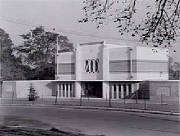
|
| 1940 - entrance to the Zoo |
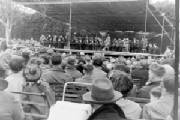
|
| September 1957 - concert at the Zoo (my pic!) |
THE MELBOURNE ZOO
The Melbourne Zoological Gardens are located just north
of the CBD in Carlton. and opened in 1862. I recall my first visit there around 1945 - my second visit was in 1950 -
then, my last visit in 1957 - strangely, I have not been there since! My impressions of that first visit were of elephants,
snakes, lions, monkeys, hippopotami, giraffes, and other strange beasts! Nowadays, there are lots more residents
there, and it is a world-famous tourist attraction!
|
|
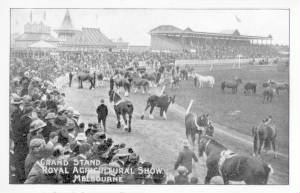
|
| 1915 Royal Show |
ROYAL AGRICULTURAL SHOW
The Royal Melbourne Show is an agricultural show held at the Royal Melbourne Showgrounds every
September. The Royal Show began in 1848. The focus of the show is the display of rural industry, including livestock and produce.
There are associated competitions and awards. It is a time when the country comes to the city, and the foundation of Australia's
economy in rural industry is celebrated.
Like other Royal Shows, the show features amusement rides and a sideshow alley,
as well as the peculiarly Australian tradition of 'Showbags', carry bags full of goodies produced by various commercial enterprises.
A
prominent feature during showtime are the many rides including a permanent wooden Mad Mouse roller coaster which resided at
the grounds till 2001, owned by Wittingslow Amusements. A permanent chairlift also resided onsite until 2005. The site has
its own railway station, used during special events located on the Flemington Racecourse line.
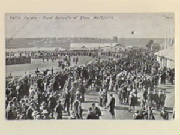
|
| 1908 Royal Show |

|
| 2011 Royal Show |
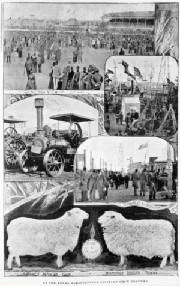
|
| 1893 Royal Show |
|
|

|
| 1948 - one of my party invitations |
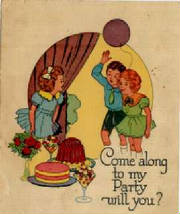
|
| 1948 - one of my party invitations |
PARTIES
In the mid-1940s it was customary for kids aged six to ten to invite their school friends
over to their places for parties. Invitations would be posted or delivered giving the details of the date, time
and place. These were often very colorfully printed cards. The parties woud be arranged by parents, who would put on a lavish
spread of cakes, sandwiches, and soft drinks. These parties did not celebrate any particular occasion but were "kid's' gatherings"
! still have many of the invitations I received!
|
|
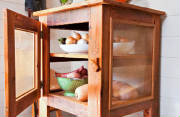
|
| Typical Coolgardie Safe of the 1940s |
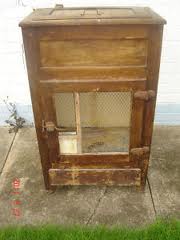
|
| Ice chest like ours - 1948 |
COOLGARDIE SAFES AND ICE CHESTS
In the
1940s we used Coolgardie safes and Ice Chests to keep food cool and crisp, as there weren't many fridges around then! Our
Coolgardie safe stood on a small cupboard, and kept vegetables quite cool.
The Coolgardie Safe was made of wire mesh, hessian, a wooden frame and had
a galvanised iron tray on top. The galvanised iron tray was filled with water. The hessian bag was hung over the side with
one of the ends in the tray to soak up the water.
Gradually the hessian bag would get wet. When a breeze came it would go through the wet bag and evaporate the water. This
would cool the air inside the safe, and in turn cool the food stored in the safe. This cooling is due to the water in the
hessian needing energy to change state and evaporate. This energy is taken from the interior of the safe (metal mesh), thus
making the interior cooler. There is a metal tray below the safe to catch excess water from the hessian.
The Coolgardie safe was a common household item in Australia until the mid-twentieth century. Safes could be purchased
ready-made or easily constructed at home. Some of the metal panel safes are highly decorated, showing the creativity of their
makers.
The Ice Chest was wooden, with a hinged lid at
the top, and a block of ice would be dropped into the compartment, which was over the shelves
for the food. To get the ice, my brother and I had to pull a billy-cart about 1 km to the Glenferrie Ice Works.
I small block of ice cost one shilling, which had to be ordered from an attendant who had a long pole with a metal
end, and the ice had to be dragged from a platform onto the billy-cart.
By 1950, the process became self-serve
- we put the money into a slot and a block of ice would be disgorged from a chute, which we manhandled into our billy cart.
The block was about 18" x 12" x 12" and we had to put it into a hessian bag for the trip home.
Ice could also be bought
from the "Iceman", a horse and cart
which would proceed slowly down the street, with the driver yelling out "Ice...ice...ice". He would deliver the ice to houses,
or residents would come out to the cart to pick up their blocks.

|
| Glenferrie Iceworks - about 1920 |
|
|

|
| Pre-1901 - Exhibition Buildings |
MELBOURNE'S AQUARIUM
The first Aquarium in Melbourne was located
in the Eastern Annexe of the Exhibition Buildings, just north of the CBD, in Carlton, and opened in 1893. It was destroyed
by fire in 1953. A new Aquarium was built next to the Yarra in 2010. I remember being taken to the Aquarium in the late 1940s
- there was an external area with rows of seats surrounding a large pool, where seals performed. Inside, there were rows and
rows of tanks containing all kinds of fish. The tanks were located either side of walkways - the roofs and walls next to the
walkways were made of artificial stone.
|
|
